Peru Facts & Information
[accordion] [toggle title=”Peru Quick Facts”]Looking for Peru Quick Facts to learn more about this fascinating country? Peru is a land of extraordinary diversity, where ancient civilizations, breathtaking landscapes, and rich traditions create an unforgettable experience.
From the legendary Machu Picchu to the vast Amazon Rainforest, and from the towering Andes Mountains to the sun-drenched Pacific coast, Peru offers a perfect blend of adventure, culture, and history.
With its world-famous cuisine, vibrant festivals, and warm hospitality, Peru continues to captivate travelers worldwide. Here are some essential Peru Quick Facts to help you explore its unique geography, traditions, and heritage.
Peru at a Glance
Peru is a diverse and vibrant country in South America, covering 1,285,216 km² (496,225 sq mi). It shares borders with Ecuador and Colombia (north), Brazil (east), Bolivia and Chile (south), and the Pacific Ocean (west). Known for its rich cultural heritage, breathtaking landscapes, and world-renowned gastronomy, Peru is a must-visit destination.
- Population: ~30 million
- Capital: Lima
- Official Languages: Spanish, Quechua
- Currency: Peruvian Sol (PEN)
- Time Zone: GMT -5
- Electricity: 220V AC, 60Hz (110V AC available in many 4- and 5-star hotels)
Best Time to Visit Peru
Peru’s climate varies across its three main regions:
- The Coast – Dry and mild, best visited from December to April.
- The Andes – Best from May to September for trekking and outdoor activities.
- The Amazon – Warm and humid year-round, with less rainfall from June to September.
Each region offers unique experiences, from coastal beaches to the high-altitude Machu Picchu and the lush Amazon rainforest.
Peruvian Gastronomy: Must-Try Dishes
Peru is famous for its diverse cuisine, influenced by indigenous, Spanish, African, and Asian cultures. Don’t miss these iconic dishes:
- Causa Rellena – A vibrant layered potato dish with seafood, chicken, or avocado.
- Cuy (Guinea Pig) – A traditional Andean delicacy, best tried in Cusco.
- Pisco Sour – Peru’s signature cocktail made with Pisco, lime juice, and egg whites.
- Ceviche – Fresh seafood marinated in lime juice, served with corn and sweet potatoes.
Looking for the best places to eat? Check out our recommended restaurants list available in our Cusco office, or share your favorite dining spots with us!
Essential Travel Tips for Cusco
Cusco sits at a high altitude, so acclimatization is crucial. Follow these tips for a smooth arrival:
- Eat light on your first day – Opt for vegetable soups and avoid alcohol.
- Rest for 1.5 to 2 hours upon arrival to minimize altitude sickness.
- Drink coca tea – A natural remedy to help with acclimatization.
Health & Safety Tips for Travelers
International travelers should obtain comprehensive travel insurance to cover medical expenses.
- Yellow Fever Vaccination is recommended for those visiting Amazon jungle areas like Puerto Maldonado.
- No vaccine required for travelers visiting Cusco and Machu Picchu.
How to Get to & Around Peru
Arriving in Peru
Major Peruvian cities with airports include: Lima, Cusco, Iquitos, Arequipa, Trujillo, and more.
International airlines such as LATAM Airlines and Avianca operate frequent flights to Peru.
- International departure tax: $31 USD (included in ticket prices).
- Domestic flight tax: ~$6 USD (usually included in fares).
Getting Around Peru
- By Air: Domestic flights are available for long distances, connecting Lima to Cusco, Arequipa, and Iquitos.
- By Land: Reliable bus services and taxis are available.
- By Train: PeruRail offers scenic routes, including trains to Machu Picchu.
How to Reach Machu Picchu
Machu Picchu, Peru’s most famous archaeological site, can be reached by:
- Train via Sacred Valley of the Incas
- Inca Trail (Classic 4- or 5-day trek)
- Short Inca Trail (2-day trek)
- Alternative Treks: Salkantay Trek (5 days), Lares Trek (4 days), and more.
Visa Requirements
Citizens of the USA, Canada, Australia, and the EU do not need a visa for short stays in Peru. However, your passport must be valid for at least 6 months from your arrival date.
Money & Currency Exchange in Peru
- Currency: Peruvian Sol (PEN)
- Exchange Rate: (Check latest rates as they fluctuate)
- USD is widely accepted in tourist areas, but damaged bills may be rejected.
Credit Cards & ATMs:
- Visa & MasterCard are widely accepted.
- ATMs are the best way to withdraw local currency.
Tipping in Peru:
- Restaurants: 10% service charge is common.
- Small eateries: Rounding up the bill is appreciated.
Social & Business Etiquette in Peru
- A handshake is the customary greeting.
- In coastal cities, it’s common for women to kiss on one cheek when greeting.
- Dress code: Casual, but business meetings may require a jacket and tie.
Peru’s Economy & Tourism Growth
Peru has a fast-growing economy, with mining and tourism as its key industries. Tourism generates over $1 billion annually, with Machu Picchu being a major attraction. The Peru-US Free Trade Agreement is expected to boost economic growth in the coming years.
Plan Your Peru Adventure Today!
Peru is a land of history, adventure, and culinary delights. Whether you’re exploring Machu Picchu, hiking the Andes, or indulging in local cuisine, there’s something for everyone.
Need help planning your trip? Contact us for recommended restaurants, travel routes, and expert tips!
[/toggle] [toggle title=”Why Should Visit Peru”]The world is filled with incredible destinations, but few can rival the magic of Peru. With its rich history, breathtaking landscapes, and vibrant traditions, this extraordinary country has captivated travelers for centuries. From the mystical ruins of ancient civilizations to the flavors of its world-renowned cuisine, Peru offers an experience like no other.
There are countless reasons to visit, but here are seven that make Peru an unmissable destination.
1.- Experience Peru’s Ancient Ruins and Rich Cultural Heritage
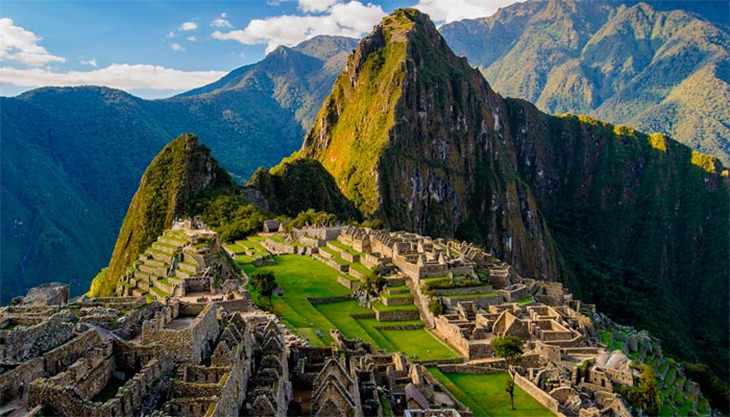
The mystical Nazca Lines, the floating islands of Lake Titicaca, and the intricate stonework of Ollantaytambo showcase the ingenuity of Peru’s ancestors. Whether exploring ruins, strolling through colonial streets, or engaging with indigenous cultures, history in Peru is not just something to see—it is something to experience.
2- People and Traditions.
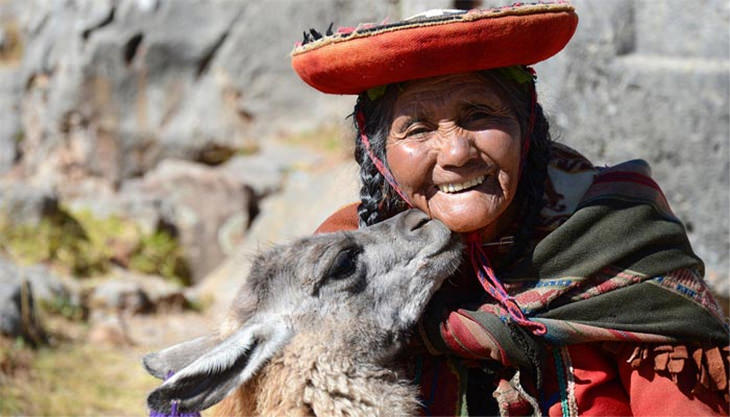
Hardworking and welcoming, they are eager to share their culture, stories, and way of life. Whether in a lively market, a quiet mountain village, or a family-run café, every interaction offers a genuine and unforgettable glimpse into the soul of Peru.
3.- Handcrafted Traditions and Timeless Skills
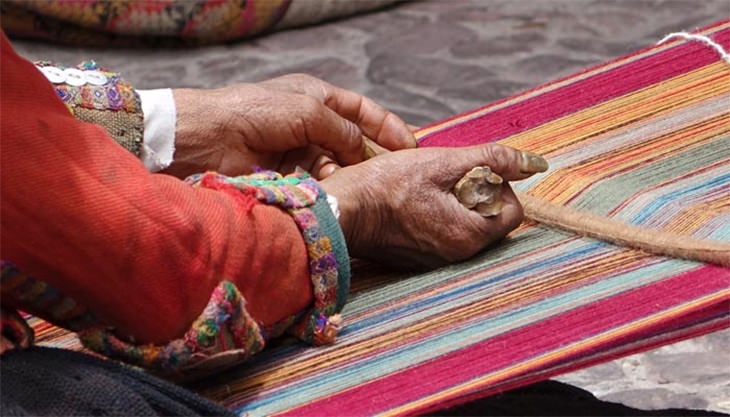
Textiles are among Peru’s most renowned handicrafts, with skilled artisans—often Quechua women—expertly weaving intricate patterns into vibrant wall hangings, scarves, sweaters, and blankets. Each design carries symbolic meaning, connecting the past to the present through threads of history.
Beyond textiles, Peru’s artistic heritage is showcased in hand-carved wooden figurines, traditional musical instruments, exquisite silver jewelry, and striking canvas paintings. These handcrafted treasures are not just souvenirs but pieces of living culture.
By purchasing them, you are not only taking home a unique work of art but also supporting local artisans and helping preserve Peru’s rich cultural legacy.
4.- Exploring Peru’s Stunning and Diverse Landscapes

Along the coast, penguins and sea lions thrive at the Ballestas Islands, just minutes from the arid deserts of Paracas. For adventure seekers, Peru is home to two of the deepest canyons in the world—Colca and Cotahuasi.
With so much diversity packed into one country, Peru offers endless opportunities to explore breathtaking natural wonders at any budget.
5.- Exploring Its World-Class Cuisine
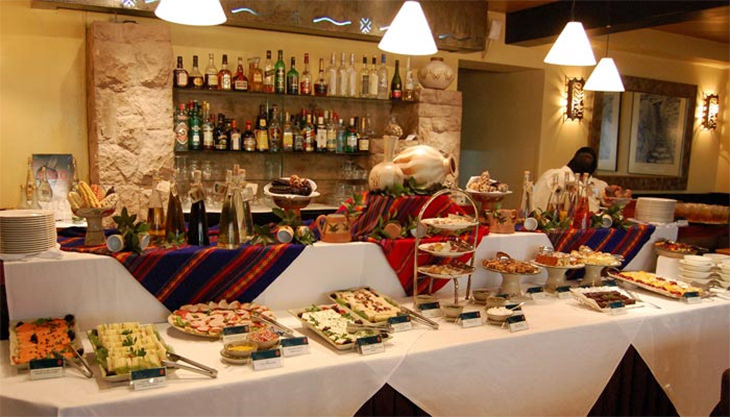
Peruvian cuisine is bold, hearty, and unforgettable. Signature dishes include Lomo Saltado, a savory beef stir-fry, and Ceviche Mixto, a refreshing mix of raw seafood cured in lime juice. Empanadas, Tiradito (a Peruvian-style sashimi), and Butifarra (a flavorful meat sandwich) showcase the country’s culinary variety.
For those seeking something truly traditional, Chicharrón (crispy fried pork) and the famous guinea pig (cuy) offer an authentic taste of the Andes. With its rich flavors and cultural depth, Peruvian food is an experience as exciting as the country itself.
6.- Discover the Beauty of Peru’s Pristine Beaches
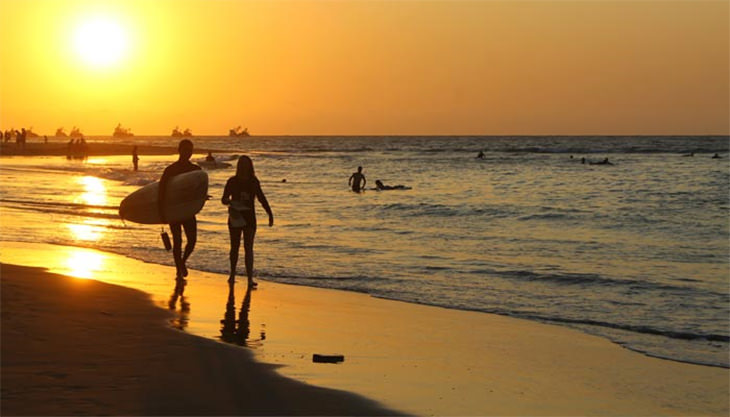
Beyond the surf, Peru’s beaches provide the perfect setting for relaxation and sun-soaked escapes. Whether you’re looking for soft sands and crystal-clear waters or lively beach towns with a vibrant atmosphere, there’s something for everyone.
Popular destinations like El Silencio, Punta Sal, Punta Hermosa, Pucusana, and Santa María invite visitors to bask in the sun, swim in the refreshing waters, and enjoy the beauty of Peru’s breathtaking coastline.
7.- Savor the Flavors of Peru’s Iconic Drinks

Wine lovers can enjoy rich vintages from the Ica region, while emoliente, a warm herbal infusion, is a local favorite for its soothing properties. In the highlands, coca tea is the go-to remedy for altitude sickness, keeping travelers energized as they explore.
Even Coca-Cola lovers will find something special—Peru’s version is made with real cane sugar, giving it a distinct and natural sweetness.
Whether you prefer something refreshing, comforting, or bold, Peru’s drinks add the perfect finishing touch to its world-class cuisine.
[/toggle] [toggle title=”Major Festivals and Events”]Peru is a country of endless celebrations, where each month brings vibrant festivals, religious ceremonies, and cultural traditions. With its diverse climate and rich heritage, every season offers unique experiences, from lively street parades to solemn processions, making it a destination full of life and tradition all year long.
January
The new year begins with Año Nuevo (New Year’s Eve), where locals wear yellow for good luck and welcome the year with fireworks and festivities. Trujillo hosts the Fiesta de la Marinera, a national dance festival where elegant couples perform the traditional marinera, symbolizing courtship through graceful movements.
February
The Inca Trail closes for maintenance, but the country remains alive with celebration. Carnaval sweeps across the highlands with vibrant parades, water fights, and street parties. Meanwhile, Virgen de la Candelaria takes over Puno with two weeks of extravagant folk music, dazzling costumes, and non-stop dancing.
March
With the reopening of the Inca Trail, hikers return to the Andean paths leading to Machu Picchu. In Ica, wine lovers gather for the Fiesta de la Vendimia, a festival dedicated to Peru’s wine and pisco, where visitors can enjoy tastings, parades, and grape-stomping competitions.
April
Semana Santa (Holy Week) dominates April, with grand religious processions, particularly in Ayacucho, which hosts some of the most elaborate Easter celebrations in South America. The entire country participates in ceremonies that blend Catholic traditions with indigenous customs.
May
The rainy season comes to an end in the highlands, making it an ideal time for trekking. The Festival of the Crosses, celebrated in Lima, Ica, and Cusco, sees locals carrying beautifully adorned crosses through the streets. In the Andes, thousands embark on the sacred Qoyllur Rit’i pilgrimage to the icy slopes of Ausangate, honoring both Catholic and indigenous deities.
June
Tourism peaks as the dry season begins, and major cultural events take place. Inti Raymi, the Festival of the Sun, is Cusco’s most spectacular celebration, reenacting an ancient Incan ritual honoring the winter solstice. Corpus Christi fills the streets with processions, and San Pedro y San Pablo brings fishermen to the coast for boat blessings.
July
With the Amazon at its driest, this is the best time for jungle exploration. Peru’s most patriotic celebration, Fiestas Patrias, takes place on July 28th and 29th, marking the country’s independence with parades, fireworks, concerts, and nationwide festivities. The feast of La Virgen del Carmen is also celebrated in Paucartambo, blending Catholic devotion with indigenous traditions.
August
As one of the busiest travel months in the highlands, August is a great time to explore Peru’s landscapes. Religious devotion is strong as Santa Rosa de Lima, Peru’s patron saint, is honored with processions in Lima and Arequipa.
September
Spring begins along the coast, bringing the International Spring Festival in Trujillo, featuring horse parades, beauty pageants, and cultural performances. Food lovers from around the world gather in Lima for Mistura, a massive culinary festival showcasing Peru’s finest dishes, ingredients, and chefs.
October
The bullfighting season kicks off, while La Virgen del Rosario is celebrated in Lima, Arequipa, and Cusco. One of the country’s most significant religious events, Señor de los Milagros, dominates Lima, where thousands dress in purple to join an enormous procession honoring an image of Christ believed to have miraculous powers.
November
Summer approaches along the coast, while the rainy season begins in the Andes and Amazon. Todos Santos (All Saints’ Day) and Día de los Muertos (Day of the Dead) are observed with visits to cemeteries, where families honor their loved ones with flowers, music, and food.
December
The year ends with Fiesta de la Purísima Concepción, a celebration of the Virgin Mary, followed by Christmas, which is deeply spiritual in the Andean highlands. Nativity scenes are often adorned with local touches, reflecting Peru’s fusion of Catholic and indigenous traditions.
Peru is a country where culture, history, and faith come together in spectacular fashion. With festivals and celebrations taking place all year long, there is always something to discover, making every visit a unique and unforgettable experience.
[/toggle] [/accordion]

